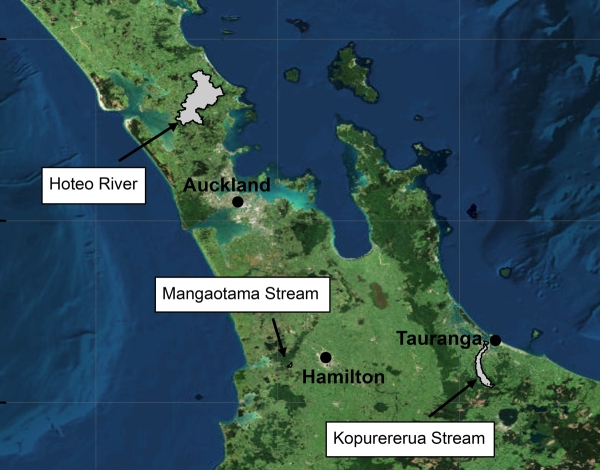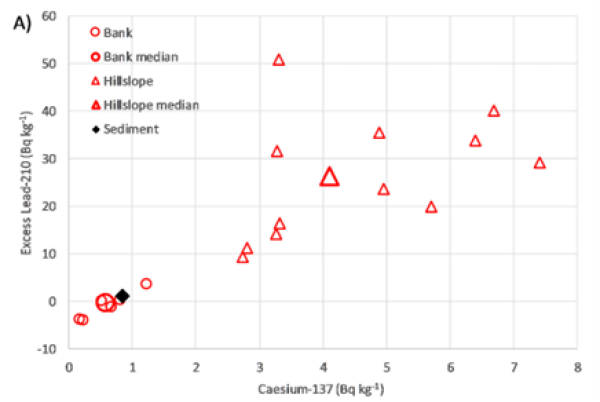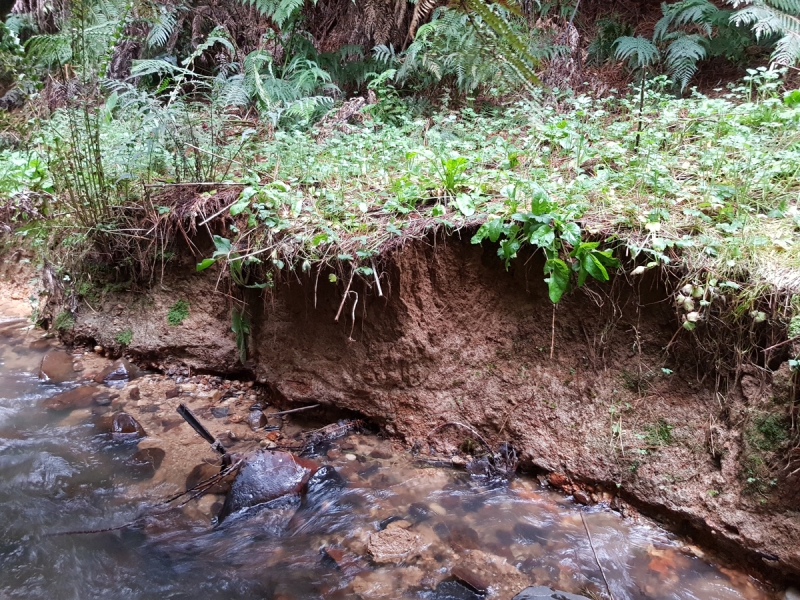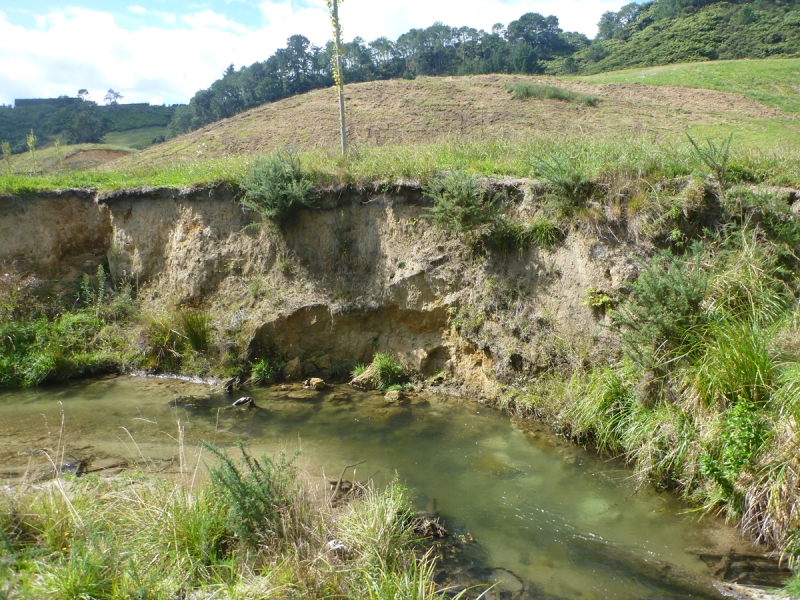The obvious and sometimes dramatic nature of streambank erosion suggests that it may be a significant contributor of sediment to New Zealand rivers. Despite this, there have been very few attempts to determine the relative importance of streambank erosion as a source of sediment in New Zealand catchments.
In this study we used a radionuclide-based sediment tracing approach to determine the importance of stream bank erosion within three catchments (Hoteo, Mangaotama and Kopurererua) in the upper North Island of New Zealand (Figure 1).
One of the radionuclides (caesium-137) used in this study was derived from fallout from atmospheric nuclear testing from the 1950s through to the 1970s. Fallout from nuclear testing deposited low levels of the radioactive isotope caesium-137 across the surface of the earth and this became strongly absorbed to sediment in the upper soil layers. In effect the nuclear fallout marked the upper soil layers (top 10 cm) with caesium-137, while the underlying soil layers (deeper than 10 cm) remained devoid of caesium-137. This means that sediment eroded from surface layers (by hillslope sheetwash erosion) has higher concentrations of caesium-137 than that sediment which is derived from deeper layers (such as gully and streambank erosion). The same surface vs sub-surface disparity in the concentrations of other (naturally occurring) radionuclides (e.g., lead-210, radium-226 and radium-228) also exists and these were also utilised in this study.
Sediment samples were collected from both catchment sources (stream banks (red circles in Figure 2) and hillslopes (red triangles in Figure 2) and downstream stream locations. (black diamond in Figure 2). The source samples were used to characterise the radionuclide content of sediment derived from the two sources. The downstream samples represent the sediment that was eroded from the catchment and transported by the river. Our results showed that the radionuclide concentrations of the sediment being transported within all three study catchments was very similar to that which is derived from streambanks (Figure2).
A statistical mixing model was used to predict the relative contribution of sediment derived from streambank and hillslope. The mixing model predicted that over 90% of the sediment at the downstream locations within all three study catchments was derived from stream bank erosion.
The finding that streambank erosion sources is a significant source of sediment was supported by previous independent field-based assessments of bank erosion from within each catchment.
This is the first such study to quantify the relative contribution of streambank erosion to the sediment loads of New Zealand catchments. Further work is required to determine how the contribution of stream bank erosion may vary within and between catchments.
Information on the relative importance of different sediment sources is crucial if limited catchment rehabilitation resources are to be targeted to where they will have the most impact.
The data for this work came from three independent Strategic Science Investment Fund (SSIF) and commercial projects.
A recent paper bringing the work together was funded by NIWA’s subcontract to the Smarter Targeting of Erosion Control MBiE Endeavour Programme: Hughes AO, Huirama MK, Owens PN, Petticrew EL (2022). Stream bank erosion as a source of sediment within New Zealand catchments. New Zealand Journal of Marine and Freshwater Research 56(4): 632-655.






